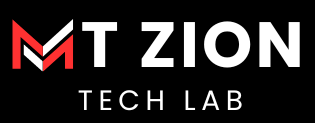In today’s fast-paced digital world, patience is a rare commodity. When it comes to websites, users expect lightning-fast loading times. Every additional second a page takes to load translates to a decrease in user satisfaction, increased bounce rates, and ultimately, lost conversions.
Website speed optimization is no longer a luxury; it’s a necessity. It’s the key to winning the race for user satisfaction and keeping your website competitive in the ever-evolving online landscape. This comprehensive guide will equip you with the knowledge and strategies to transform your website into a speed demon.
The Devastating Impact of Slow Websites
Let’s delve into the harsh realities of a slow website:
- Impatient Users, Lost Conversions: Studies show that users expect websites to load in under 3 seconds. If your website takes longer, visitors are likely to bounce and head to a competitor’s site.
- Search Engine Penalty Box: Website speed is a crucial ranking factor for search engines like Google. A slow website can get penalized in search results, leading to decreased organic traffic.
- Diminished User Experience: A sluggish website disrupts the user journey. Long loading times create frustration and a negative impression of your brand.
The Winning Strategies for Website Speed Optimization
Fortunately, there are several strategies you can implement to optimize your website for speed:
- Image Optimization: Images are often the biggest culprits behind slow loading times. Compress images without compromising quality and utilize appropriate file formats (JPEG for photos, PNG for graphics).
- Minify Code: Minification involves removing unnecessary characters, whitespace, and comments from your website’s CSS and JavaScript files. This results in smaller file sizes and faster loading times.
- Leverage Browser Caching: Enable browser caching to store website elements like images and stylesheets on a user’s device. This reduces the amount of data that needs to be downloaded on subsequent visits, leading to faster page loads.
- Content Delivery Networks (CDNs): A CDN distributes your website’s content across a network of servers around the world. This ensures faster loading times for users regardless of their physical location.
- Reduce HTTP Requests: Every element on your website, from images to scripts, requires an HTTP request. Minimizing the number of HTTP requests can significantly improve loading times. Consider combining CSS and JavaScript files and utilizing techniques like lazy loading for images.
Optimizing for Mobile: A Crucial Consideration
With the ever-increasing dominance of mobile browsing, optimizing your website for mobile devices is paramount. This includes ensuring fast loading times on mobile data networks and using responsive design to provide an optimal user experience across all screen sizes.
Tools for Measurement and Monitoring
Several free and paid tools are available to help you measure your website’s speed and identify areas for improvement. Some popular options include Google PageSpeed Insights, GTmetrix, and Pingdom. These tools provide valuable insights and actionable recommendations to optimize your website for speed.
Website Speed Optimization: A Continuous Journey
Website speed optimization is an ongoing process. As your website grows and you add more content, it’s essential to regularly monitor its performance and implement ongoing optimization strategies. By prioritizing website speed, you’ll ensure a smooth and enjoyable user experience, higher search engine rankings, and ultimately, a thriving online presence.
Conclusion: The User Experience Edge
In today’s competitive digital landscape, website speed optimization is a non-negotiable factor. By implementing the strategies outlined in this guide, you’ll empower your website to deliver a winning user experience, one that is fast, efficient, and keeps your audience engaged. Remember, a fast website is a happy website, and happy websites convert!

